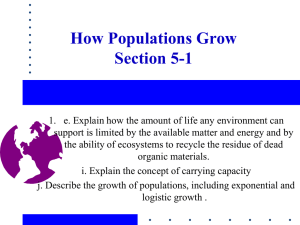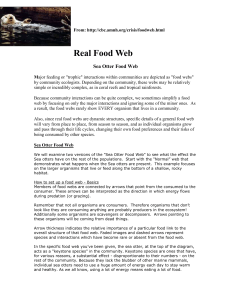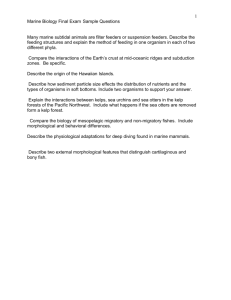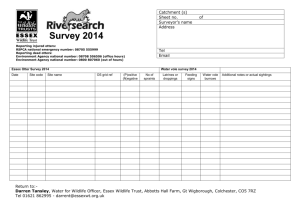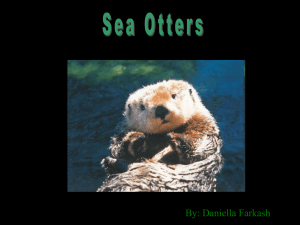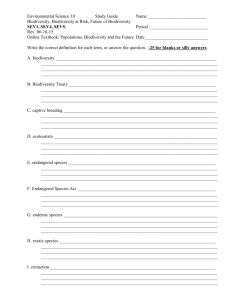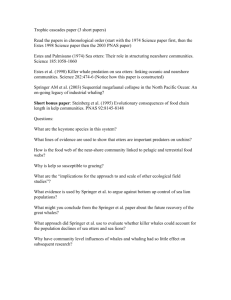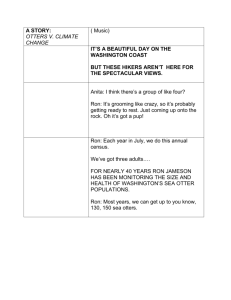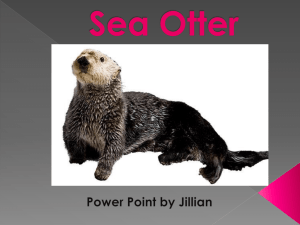Real Food Web
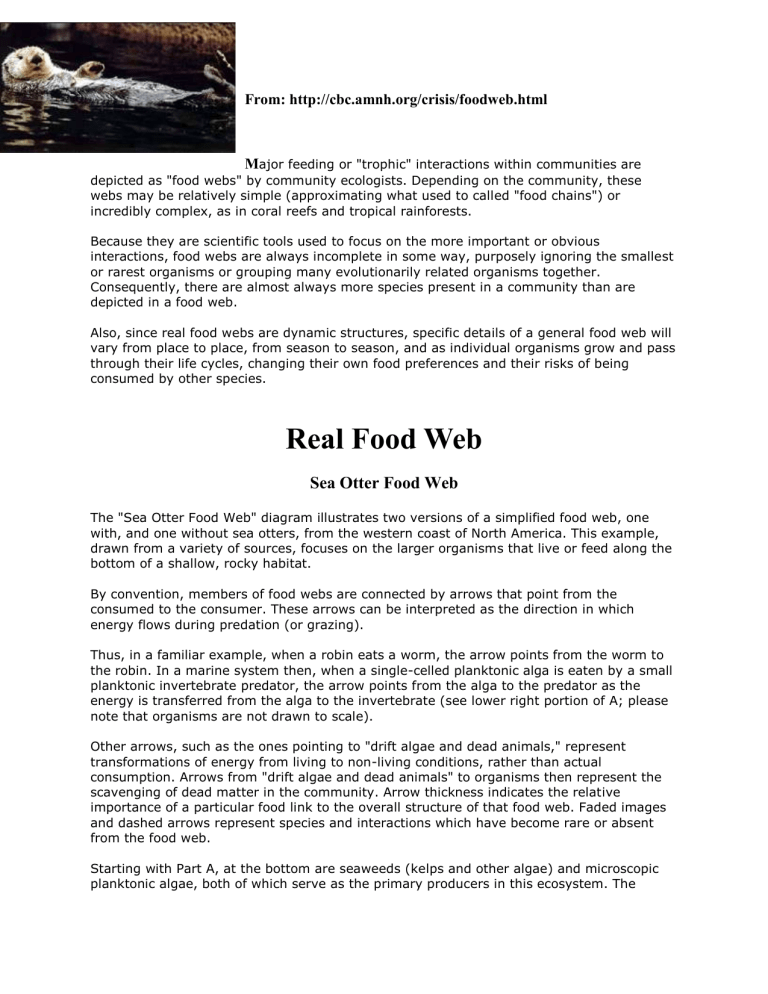
From: http://cbc.amnh.org/crisis/foodweb.html
M ajor feeding or "trophic" interactions within communities are depicted as "food webs" by community ecologists. Depending on the community, these webs may be relatively simple (approximating what used to called "food chains") or incredibly complex, as in coral reefs and tropical rainforests.
Because they are scientific tools used to focus on the more important or obvious interactions, food webs are always incomplete in some way, purposely ignoring the smallest or rarest organisms or grouping many evolutionarily related organisms together.
Consequently, there are almost always more species present in a community than are depicted in a food web.
Also, since real food webs are dynamic structures, specific details of a general food web will vary from place to place, from season to season, and as individual organisms grow and pass through their life cycles, changing their own food preferences and their risks of being consumed by other species.
Real Food Web
Sea Otter Food Web
The "Sea Otter Food Web" diagram illustrates two versions of a simplified food web, one with, and one without sea otters, from the western coast of North America. This example, drawn from a variety of sources, focuses on the larger organisms that live or feed along the bottom of a shallow, rocky habitat.
By convention, members of food webs are connected by arrows that point from the consumed to the consumer. These arrows can be interpreted as the direction in which energy flows during predation (or grazing).
Thus, in a familiar example, when a robin eats a worm, the arrow points from the worm to the robin. In a marine system then, when a single-celled planktonic alga is eaten by a small planktonic invertebrate predator, the arrow points from the alga to the predator as the energy is transferred from the alga to the invertebrate (see lower right portion of A; please note that organisms are not drawn to scale).
Other arrows, such as the ones pointing to "drift algae and dead animals," represent transformations of energy from living to non-living conditions, rather than actual consumption. Arrows from "drift algae and dead animals" to organisms then represent the scavenging of dead matter in the community. Arrow thickness indicates the relative importance of a particular food link to the overall structure of that food web. Faded images and dashed arrows represent species and interactions which have become rare or absent from the food web.
Starting with Part A, at the bottom are seaweeds (kelps and other algae) and microscopic planktonic algae, both of which serve as the primary producers in this ecosystem. The
planktonic algae support small planktonic invertebrates such as copepods, which in turn are consumed by filter-feeding sessile invertebrates such as hydroids, scallops, barnacles, sea anemones, bryozoans, and tube worms, as well as other smaller mobile predators like fish and certain crustaceans.
The larger seaweeds are eaten both directly by a broad range of animals, including sea urchins, fishes, small snails, shrimp-like crustaceans, sea stars, and crabs, and indirectly (as large and small loose pieces of "drift") by abalones, sea urchins, mussels, and barnacles.
Many of these animals are then consumed by mid-level predators, such as other sea stars, larger crabs, larger fishes, and octopuses.
The sea otter, at the top of the diagram, acts as a "keystone species" in the community.
Keystone species are ones that have, for various reasons, a substantial effect - disproportionate to their numbers - on the rest of the community. Because they lack the blubber of other marine mammals, individual sea otters need to consume a huge amount of food each day to stay warm and healthy.
While a population of otters may eat many things, sea urchins are their favorite prey. Since sea urchins can have major effects on other species in the community, otter predation on them exerts a controlling influence on the ecosystem.
The impact of sea urchins is relatively well understood. Sea urchins, endowed with strong jaws and very hard teeth, are tireless grazers, capable of consuming tough, woody kelps
and mineralized invertebrate skeletons. Studies have shown that, in the absence of otters, some urchin populations can grow so dense that they consume nearly all the bottom cover of edible algae and sessile invertebrates.
At this extreme, these transformed communities are known as "urchin barrens" since little remains of the former biological and structural diversity (i.e., the kelp forest). As represented in Part B, the food web in such areas is dominated by urchin grazing, with few other important food relationships among the now rare members of the community. Under these conditions, with the bigger seaweed gone, urchins subsist on small, quick growing algal turfs, and any pieces of drift algae that float in from other areas.
The urchin barren food web (Part B) provides important clues to the functional relationships in the kelp forest food web (Fig. A). Because of the strong potential impact of urchins on seaweeds and other invertebrates (the blue arrows), and the strong effect of otters on urchin populations (the thick purple arrow), the presence of otters prevents sea urchins from massing and mowing down the kelp plants upon which many other species depend.
In other words, when present, sea otters can suppress sea urchin populations to such an extent that urchins are unlikely to overgraze the other members of the community. Such multi-level effects are called "trophic (or feeding) cascades."
Though sea otters were once present around the whole north Pacific rim, from northern
Japan to Baja California, humans interested in their dense fur hunted them to complete or near extinction in most parts of their range during the 18th and 19th centuries. Since the end of hunting and the implementation of 20th century wildlife protections (e.g., the
Endangered Species Act and other laws), sea otter populations have increased and slowly spread, though it will likely be centuries before they return to much of their previous range.
With increasing otter numbers over the past several decades, scientists had noticed both fewer "urchin barrens" and increased areas of kelp forest.
Recently, however, this trend has been reversed in parts of western Alaska. Since the early
1990s, researchers have observed dramatic declines in sea otter populations, increases in sea urchin numbers, and decreases in the amount of kelp. Surprisingly, a new study suggests that these otter declines are due to new predation pressures from orcas (killer whales), a species never previously observed attacking sea otters.
Scientists suggest that recent declines in the whale's primary food of sea lions has forced them to start consuming otters, a switch that is having large effects on kelp communities because of the otter-urchin-kelp trophic cascade.
In addition to humans and now orcas, large sharks are traditionally the most important predators of otters. Since these sharks forage primarily in open waters, however, sea otters commonly use kelp forests as refuges from attacks. Additionally, many shark populations have been heavily overfished by people, further decreasing their predatory effects on otters.
Finally, in many places still without otters, commercial divers intensively harvest sea urchins for international seafood markets. Though the harvesting patterns and therefore the community effects of humans and otters may be quite different, to some extent, human harvests may simulate the controlling effect of otters.
Name _________________________________
Food Web Discussion Questions: Answer in ink in the spaces provided.
1.
Give a brief explanation of what a food web is. How is a food web different from a food chain?
2.
Identify which organisms in the “normal” food web fall into the following categories: a.
Primary producer b.
Primary consumer c.
Secondary consumer d.
Top predator
3.
Which group of organisms would you expect to have the greatest biomass and why?
4.
In you own words, what is a “keystone species” in an ecosystem? Would we fit this classification? Justify!
5.
Suppose are large amount of fertilizer was allowed to wash into this ecosystem resulting in an “algal bloom” where there is an overabundance of primary production. What do you think would happen to the population of otters? Should the nutrient levels return to normal levels the following year, what might happen to the otters then?
6.
In our own area, the deer population has dramatically increased as our ecosystem has become more “suburban”. While the natural predator of the deer (mountain lion) has long been removed from this location, hunting has declined as housing density increases providing deer with more habitat which is non-threatening (hunting doesn’t easily happen
in subdivisions). Historically, the forests in this area were predominantly composed of large oak trees with some maple. Today, we are seeing that there are many more maple saplings/young trees than oaks. Relate the term “deer barren” to the fate of the oak trees.
7.
We have discussed that only about 10% of available energy gets passed up from one trophic level another. Looking at the first (normal) food web, trace the most efficient
(least energy lost) pathway from primary producer to sea otter.
